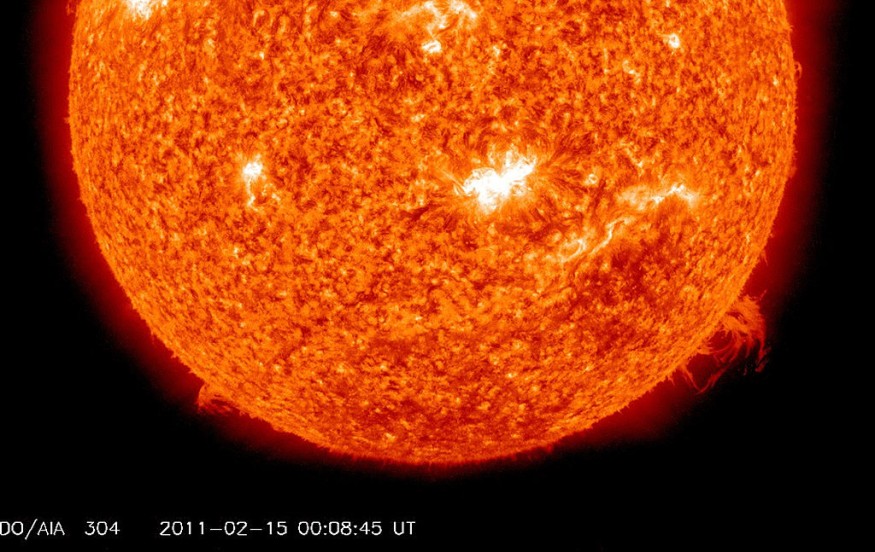A video recently showed the most powerful of a series of flares emitted by an active sunspot region with each class, ten times more powerful than the previous, with numerous grades within the class.
As specified in a ScienceAlert report, this said region on the Sun "has been going hardcore." Specifically, on March 31, AR2975 exploded in the strongest flare class of which the Sun is capable, an X-class, described as "clocking in at X1.3.
The Sun emitted a significant solar flare on March 30, 2022, peaking at 1:35 p.m. ET. NASA’s Solar Dynamics Observatory captured an image of the event, which was classified as an X-Class flare. https://t.co/oH58uGT9hb pic.twitter.com/LTaO68tnPz
— NASA Sun & Space (@NASASun) March 30, 2022
At the time this was reported, AR2975 had released 36 flares specifically comprising one tiny B-class flare, 29 middling C-class flares, nine of the stronger M-class flares, and this so-called one X-class monster. The strongest flare on record so far, to lash Earth was the occurrence of an X28 in November 2003.
Essentially, when the Sun flares, and their associated CMEs or coronal mass ejections are unleashed in the general direction of Earth, shenanigans can arise.

X-Class Flare
A huge belch of solar particles is launched into interplanetary space. When such particles collide with the magnetic field and atmosphere of the Earth, geomagnetic storms are stimulated.
Mostly, these will more or less go unnoticed by the so-called lowly surface-dwellers. They can cause navigation and radio blackouts, perhaps some fluctuations in the power grid, and spectacular aurorae lighting up as particles; the polar skies, accelerating the field lines of Earth, are deposited at the poles, where they interact with the atmosphere.
For instance, a massive CME linked to two of AR2975's M-class flares, detailed in a NASA blog article, should have entered the Earth in the last few days, stimulating a strong geomagnetic storm. Unless one was out capturing images of auroras, he probably did not notice much of anything.
The X-class flare, which is also detailed in a separate NASA report, and the subsequent powerful M9 flare, produced by AR2975 certainly, did occur on the Earth-facing side of the Sun, although that's not a guarantee of geomagnetic storms.
Possibility of Substantial Earth Impacts
The said region is presently rotating away from this planet, and any solar particle launched into space may deliver a glancing blow. Spaceweather quotes unnamed analysts from NOAA; the CME linked to the "X1 flare was modeled," and it is possible to have any substantial "Earth impacts." Nonetheless, the odd of aurora is high over the first few days of this month.
As space news reports have said, if one thinks he has been hearing so much about the restlessness of the Sun lately, they are "not wrong." The star has been extremely rowdy, with eruptions every day since the middle of January and a lot of activity before then.
Essentially, the sun goes through activity cycles every 11 years, with a clearly described minimum, minimal sunspot and flare activity, and maximum.
Since the latest solar minimum occurred in December 2019, observers are currently seeing escalating activity. Past solar cycles exhibit similar activity levels at the same phase. On the other hand, the solar maximum is due to occur sometime around July 2025, and everyone has unprecedented eyes on the Sun.
Related information about the recent solar eruption is shown on 23 ABC News / KERO's YouTube video below:
Check out more news and information on the Sun in Science Times.












